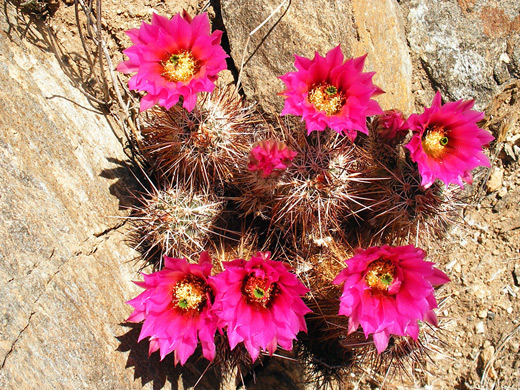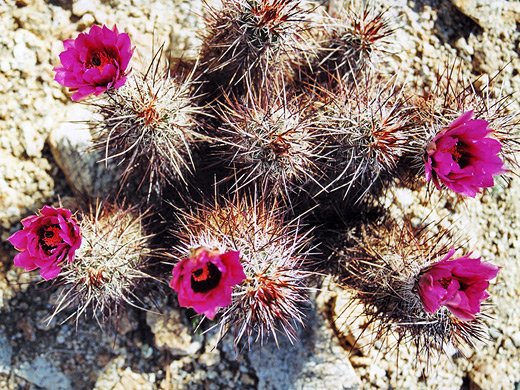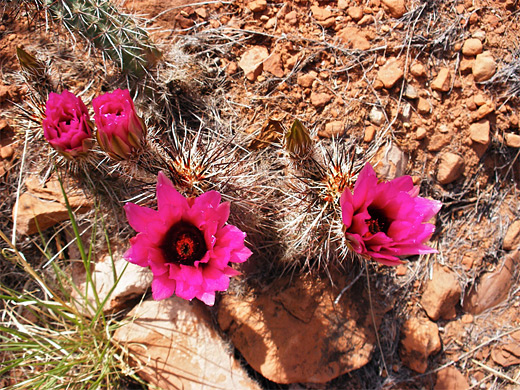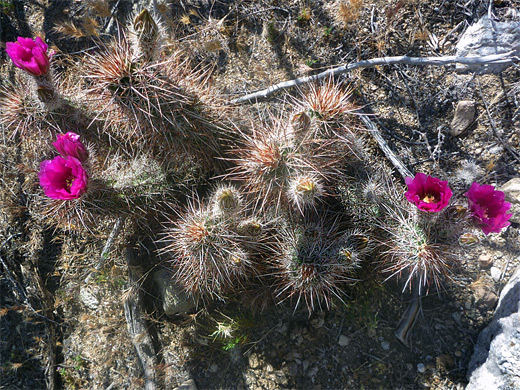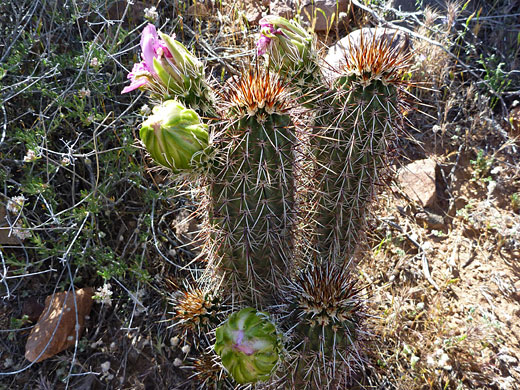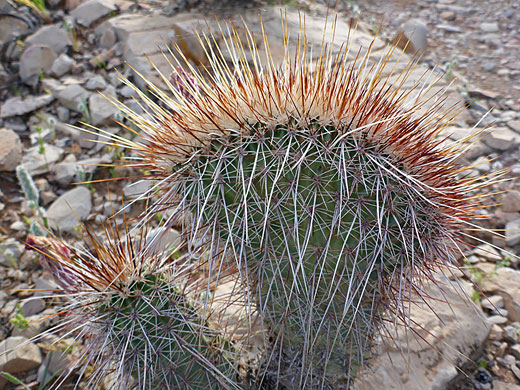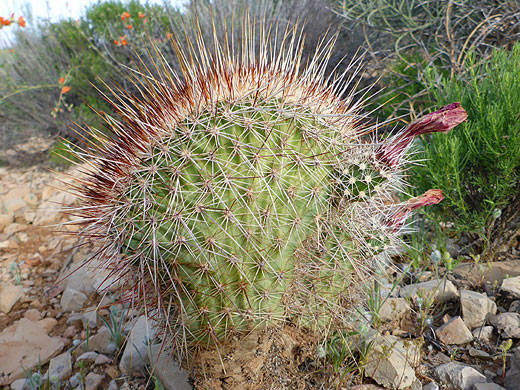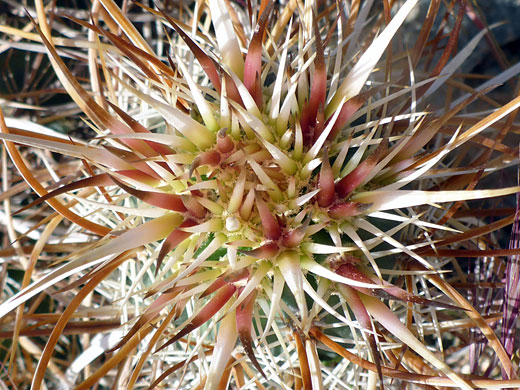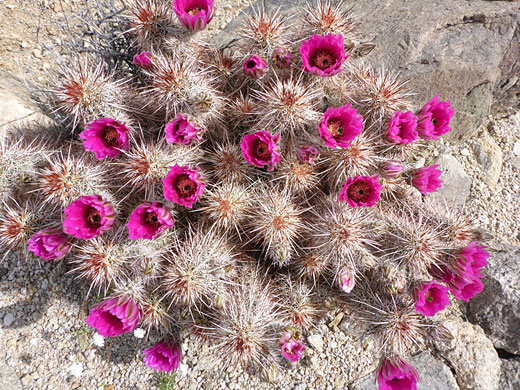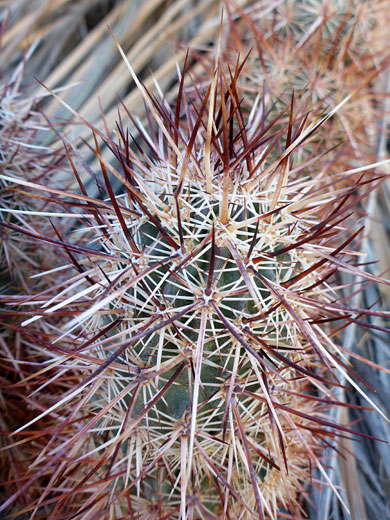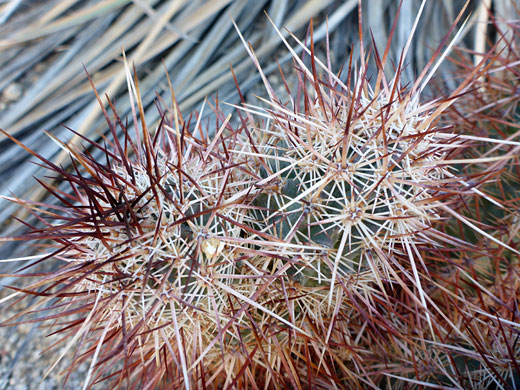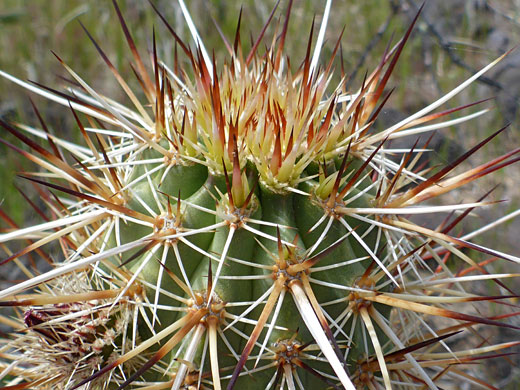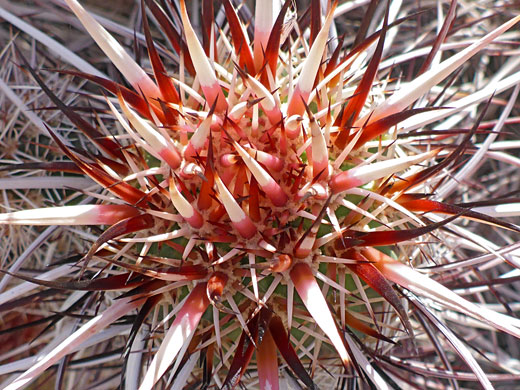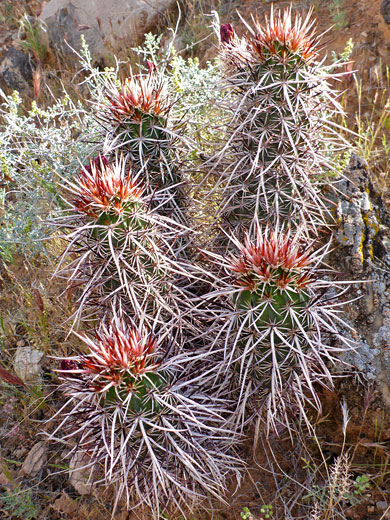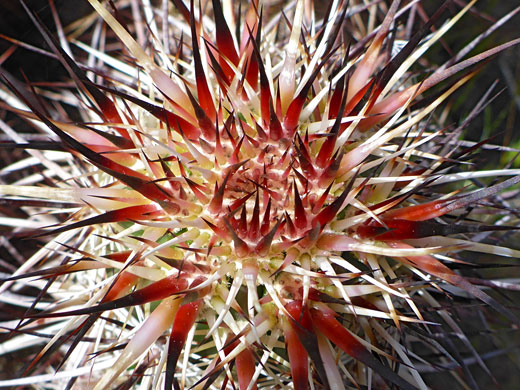Scientific name:
Echinocereus engelmannii
Common name:
Engelmann's hedgehog cactus
Range:
West Arizona (all areas below 5,000 feet), south and west Utah, east Nevada and the deserts of California
Form:
Medium-sized clusters, up to 50 stems
Habitat:
Exposed slopes, desert plains, scrubland; generally dry, sunny locations
Flowers:
Magenta, pink, sometimes lavender and purple, appearing in March and April

Distribution map for echinocereus engelmannii
Engelmann's hedgehog cactus is a typically spiny plant of the Sonoran and Mojave deserts, growing in large clusters (up to 60 stems), and is similar in appearance to echinocereus stramineus found further west in Texas and New Mexico. The cactus is somewhat variable in the color, size and distribution of spines, and occurs in a number of regional varieties, including acicularis, armatus, howei, munzii, purpureus and variegatus, but all are generally larger and more heavily spined than similar species.
Spines tend to be thickest for plants towards the west of the range, and are colored in various shades from white to dark brown, on the same plant. The longest spine (up to 3 inches) is always white, however. There are between 15 and 20 spines per areole; four to eight are longer, central spines, the remainder shorter radials.
Like most hedgehog cacti, the spring flowers of echinocereus engelmannii are very bright and colorful; rich purple-pink, darker towards the base. They are followed by spiny, greenish fruits that turn red when ripe. Stems are upright at first but may fall to the ground with old age and grow laterally. This is one of the most common of the hedgehog cacti.
Spines tend to be thickest for plants towards the west of the range, and are colored in various shades from white to dark brown, on the same plant. The longest spine (up to 3 inches) is always white, however. There are between 15 and 20 spines per areole; four to eight are longer, central spines, the remainder shorter radials.
Like most hedgehog cacti, the spring flowers of echinocereus engelmannii are very bright and colorful; rich purple-pink, darker towards the base. They are followed by spiny, greenish fruits that turn red when ripe. Stems are upright at first but may fall to the ground with old age and grow laterally. This is one of the most common of the hedgehog cacti.
All Contents © Copyright The American Southwest | Comments and Questions | Contribute | Affiliate Marketing Disclosure | Site Map
